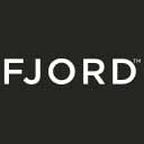Fjord Trends look back: 2020
Fifteen years of making business and design predictions, but how do our thoughts through the years seem to us now?
Fjord Trends 2022 will be our fifteenth report into what’s coming up for the business and design industries. To celebrate this milestone, we’ve asked some of our leadership team to pick out one trend from each of the past 15 years, to share their own thoughts and to ponder how things have panned out since. This is part thirteen.
This episode our Fjord Trends 2022 countdown is all about 2020 and it’s written by Jussi Edlund of Fjord Singapore.
As with everything, context is king, so let’s set the scene for the year leading up to launch, with some cultural references that might take you right back. It was the year in which US President Donald J Trump was impeached, Brexit continued to dominate the UK’s headlines, and a market in a small Chinese town called Wuhan became known as the place where Covid-19 originated. The “Game of Thrones” finale was met with a bit of disappointment from fans, Greta Thunberg gave a powerful and chilling speech to the UN aged 16, and Jennifer Aniston joined Instagram and set a world record by gaining 1 million followers within 5h 16m.
Over to Jussi…
My favorite trend: Money changers
By Jussi Edlund
What we said back then…
Our experience of money is changing. This includes how we think of it at a macro scale (what it is) and at the micro (what it can do). The very notion and shape of money is morphing — and so is our perception of it, relationship with it, and thus how we think about paying for things. Once, money was a physical entity — the shift away from that began a long time ago with credit cards. Now, in a new wave of change, it’s evolving towards invisible value exchange ecosystems powered by digital — a fundamental shift that enables us to do more than just buy things and opens up a host of new product and service opportunities. In this evolution, money can carry other information with it and represent multiple forms of value that aren’t national currencies. At the same time, banks (old and new) are innovating the ways we think about our personal finances not only now, but in our near future, using Artificial Intelligence.
Having lived in Asia for the last 14 years, this is the trend that has affected my life the most.
I spent three years in Shanghai between 2012 and 2015, and there I witnessed first-hand the seismic shift that the country went through when they moved from cash to cashless almost overnight. I left China in 2015 but still traveled back for work. The highest denomination bill in China is the 100RMB note (roughly 15USD). While I lived there, credit cards were not commonly accepted even in Shanghai, which meant that my wallet was always fat with bills. Three months after leaving China to move back to Singapore, I traveled to Shanghai for work and I complained to a colleague about this fact — the trouble of having to carry so much cash around. He looked at me quizzically and said “oh, we stopped doing that. We’ve all shifted to WeChat pay about two months ago. Nobody carries cash anymore.” To me, this was an extremely powerful moment where a large corporate entity brute-forced change in a huge digitally savvy population and managed to change society in only a few months.
Since 2019, changes in how we perceive money have accelerated. Here in Singapore, we have multiple digital wallets where cash is stored. Ride hailing businesses, e-commerce companies and other digital companies are competing for our “cash”, offering us incentives and loyalty points to buy things using their platforms. In stores and cafes there’s a slew of different payment options to choose from. This basically means that the services that banks used to offer around payments — between peers as well as to businesses — are often now being handled through a middle-man business that has nothing to do with the service you’re buying. So new companies were suddenly trying to be banks.
I think the next few years will be pivotal in terms of seeing even more services traditionally associated with banks and financial institutions changing. With the rise of blockchain-based crypto currencies and more specifically smart contracts, we’re already seeing other traditional value-added services that banks used to offer being offered by new DeFi applications. Not just simple things like money transfer and remittance, which have been around for a comparatively long time, but high-yield savings accounts, investment and fund management, loan products and insurance.
What I personally believe hasn’t kept up with the lightning speed of progress in these new financial products is design. With the vast — almost unfathomable — complexity of some of these products and services, design is needed to make them approachable for potential customers and users. That will be a huge factor in helping everyone grapple with the way money is morphing moving forward.
Fjord Trends 2022 is coming soon. Be among the first to know when it goes live. Sign up here to be notified.
